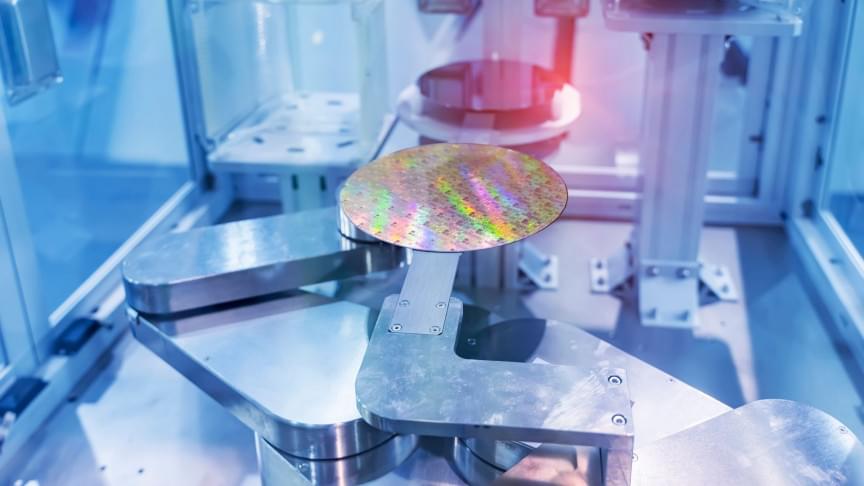IBM Research partnered with Tokyo Electron to streamline the 3D chip stacking process and alleviate the strain on the chip industry for years to come.



Researchers in Germany have demonstrated quantum entanglement of two atoms separated by 33 km (20.5 miles) of fiber optics. This is a record distance for this kind of communication and marks a breakthrough towards a fast and secure quantum internet.
Quantum entanglement is the uncanny phenomenon where two particles can become so inextricably linked that examining one can tell you about the state of the other. Stranger still, changing something about one particle will instantly alter its partner, no matter how far apart they are. That leads to the unsettling implication that information is being “teleported” faster than the speed of light, an idea that was too much for even Einstein, who famously described it as “spooky action at a distance.”
Despite its apparent impossibility, quantum entanglement has been consistently demonstrated in experiments for decades, with scientists taking advantage of its bizarre nature to quickly transmit data over long distances. And in the new study, researchers from Ludwig-Maximilians-University Munich (LMU) and Saarland University have now broken a distance record for quantum entanglement between two atoms over fiber optics.
Continuing our look at Dyson Spheres we examine the concept of the Nicoll-Dyson Beam, a type of advanced weapon that uses the output of an entire sun to create a laser that can strike target across the galaxy.
Support the Channel on Patreon:
https://www.patreon.com/IsaacArthur.
Listen or Download the audio of this episode from Soundcloud:
https://soundcloud.com/isaac-arthur-148927746/ms09-nicoll-dyson-beams.
Support the Channel on Patreon:
https://www.patreon.com/user?ty=h&u=3365828
Featured Artist Jakub Grygier’s page:
https://www.artstation.com/artist/jakub_grygier

Tokyo/New Delhi: Tetsuya Yamagami, who shot Shinzo Abe in Nara City, used a handmade gun to attack the former Japanese Prime Minister, said reports. The 41-year-old shooter, a resident of Nara City in Japan shot Abe in his chest from 10 feet away, said reports. For the unversed, Abe was shot during live address in Western Japan. The attack was a shock in one of the world’s safest countries with some of the strictest gun control laws. During interrogation, the attacker has confessed that he was dissatisfied with Abe.
NHK public broadcaster aired dramatic footage of Abe giving a speech outside of a train station in the western city of Nara. He is standing, dressed in a navy blue suit, raising his fist, when a gunshot is heard. Footage then shows Abe collapsed on the street, with security guards running toward him. He holds his chest, his shirt smeared with blood.
Second video shows the attempted assassination of former Japanese Prime Minister Shinzo Abe.
Despite the fact that sex is a basic instinct and a near-universal experience, we know remarkably little about it. And so, this week, we’re teaming up with our friends at Futurism, oracles of all things science, technology and medicine, to look at the past, present and future of pleasure from a completely scientific perspective.
For a while now, the neurotransmitter dopamine has been seen as the conductor of good feelings. It’s the subject of love songs, the seductress of biohackers and the ostensible “pleasure chemical.” But as research continues to uncover more about our brain’s reward system, dopamine is beginning to look less like the maestro and more like a member of the band.
Buoyed by research that says inhabiting someone else’s body can change how you perceive your own, researchers have started to investigate the vast, erotic potential of virtual sex.
Despite the fact that sex is a basic instinct and a near-universal experience, we know remarkably little about it. And so, this week, we’re teaming up with our friends at Futurism, oracles of all things science, technology and medicine, to look at the past, present and future of pleasure from a completely scientific perspective.
Sexual psychologist Cathline Smoos spent most of last year having freaky, virtual sex with her two then-boyfriends. Usually, they fooled around together in the trippy, immersive game VRChat, but one day, they decided to explore what it would be like to have sex as objects instead. In their respective bedrooms on different corners of the globe, they strapped on their VR headsets, and embodied two non-human avatars; Smoos chose a chest of drawers, her partner a TV.



